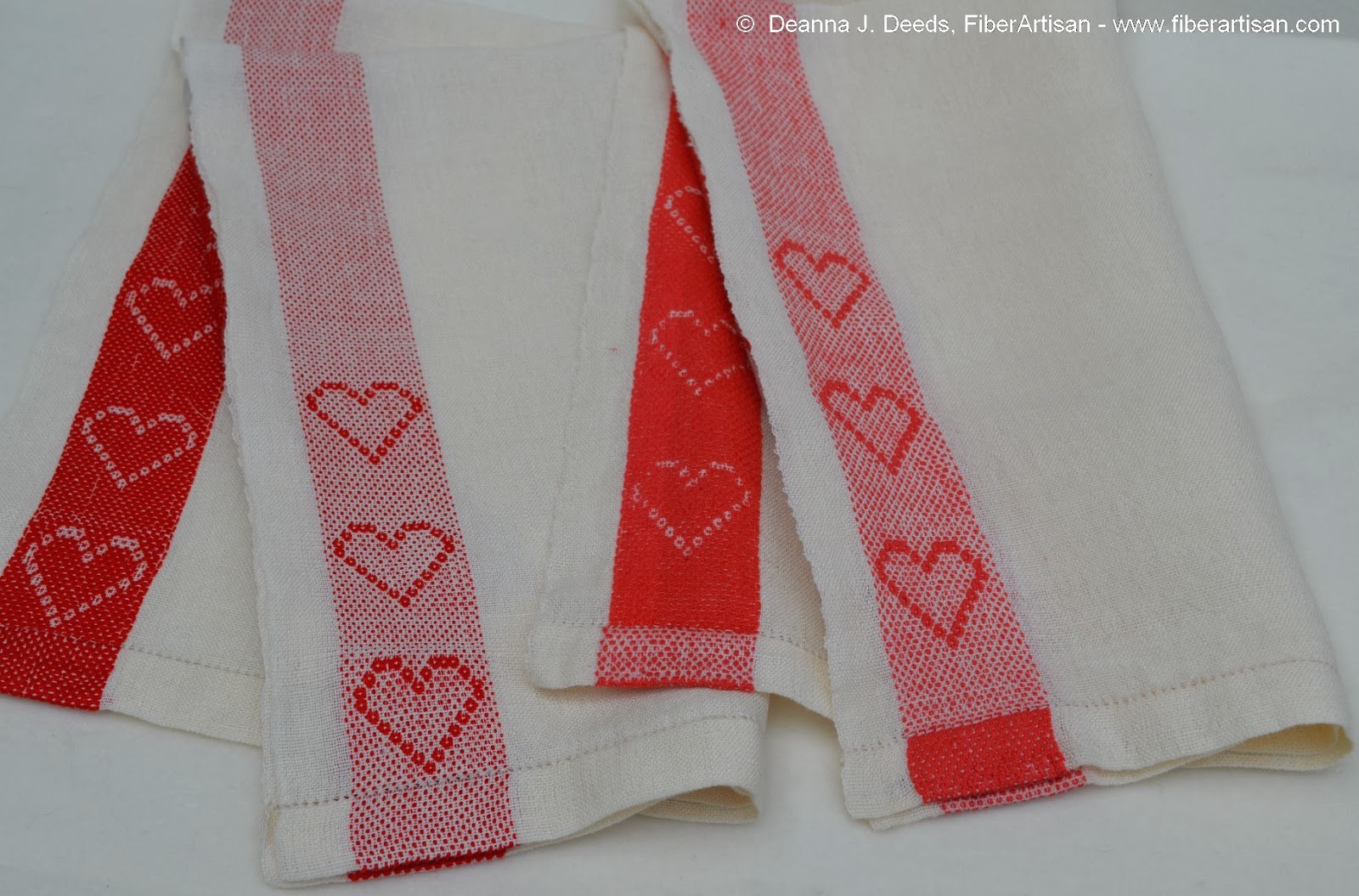The Towel of the Month series continues, from the original article by Clotilde Barrett in
Weaver's Journal issue #30. The structure to study in March is overshot. Barrett calls it miniature overshot. Again the image is a bit fuzzy, but hopefully it gives an idea of what it looks like. You could weave it in green as shown for St. Patrick's Day, or in any color you like. The specifics:
Total number of warp ends: 595
Warp: 40/2 bleached linen
Pattern weft: 5-strand cotton floss, green
Tabby weft: 20/1 linen
Width in reed: 19.8 inches
I'll post a draft soon.
In the photo you can see the example is woven with a portion of the pattern as a small border near one hem, and the full pattern on the other end, farther from the hem. You could also do the full pattern at both ends for a symmetrical towel if you like. The article doesn't say how to make the thin lines bordering the pattern areas. Maybe just one shot of pattern weft in a tabby shed instead of a linen shot. I think it looks nice.
I have two questions about this one so far. First, what exactly is miniature overshot? I've found a couple references to it online, and I mean to go through my library to see if I can find any more details or a definition. Is it just an overshot pattern that is smaller in scale than most? The only thing Barrett says about it is that it is threaded on twill and extended twill, but that seems to be true for many overshot threadings.
My other question is about the pattern weft recommended in this project, which is listed as 5-strand floss. I've never heard of 5-strand floss. I wonder if this was something available in the 1980s? I plan to use the standard 6-strand embroidery floss, but we'll see how it works out.
So who's with me this month? Practice overshot and have a fabulous kitchen towel as a result! If you have any comments on either of my questions above, or any questions of your own about this project, please post a comment!
Weave
along
and get a chance to win the Towel of the Month! You do not have to
weave every month, just the towels that interest you. If you are
weaving
along, please leave a comment to let us all know. Put a link or url in
the comment to a photo (on your Flickr, Picasaweb, Photobucket, your
blog etc.) of your work in progress. Deadline to post you r comment is
midnight GMT Mar 31,
2014.
 It's the end of March, the Towel of the Month is finished, and one of them is on its way to my next test kitchen!
It's the end of March, the Towel of the Month is finished, and one of them is on its way to my next test kitchen!









